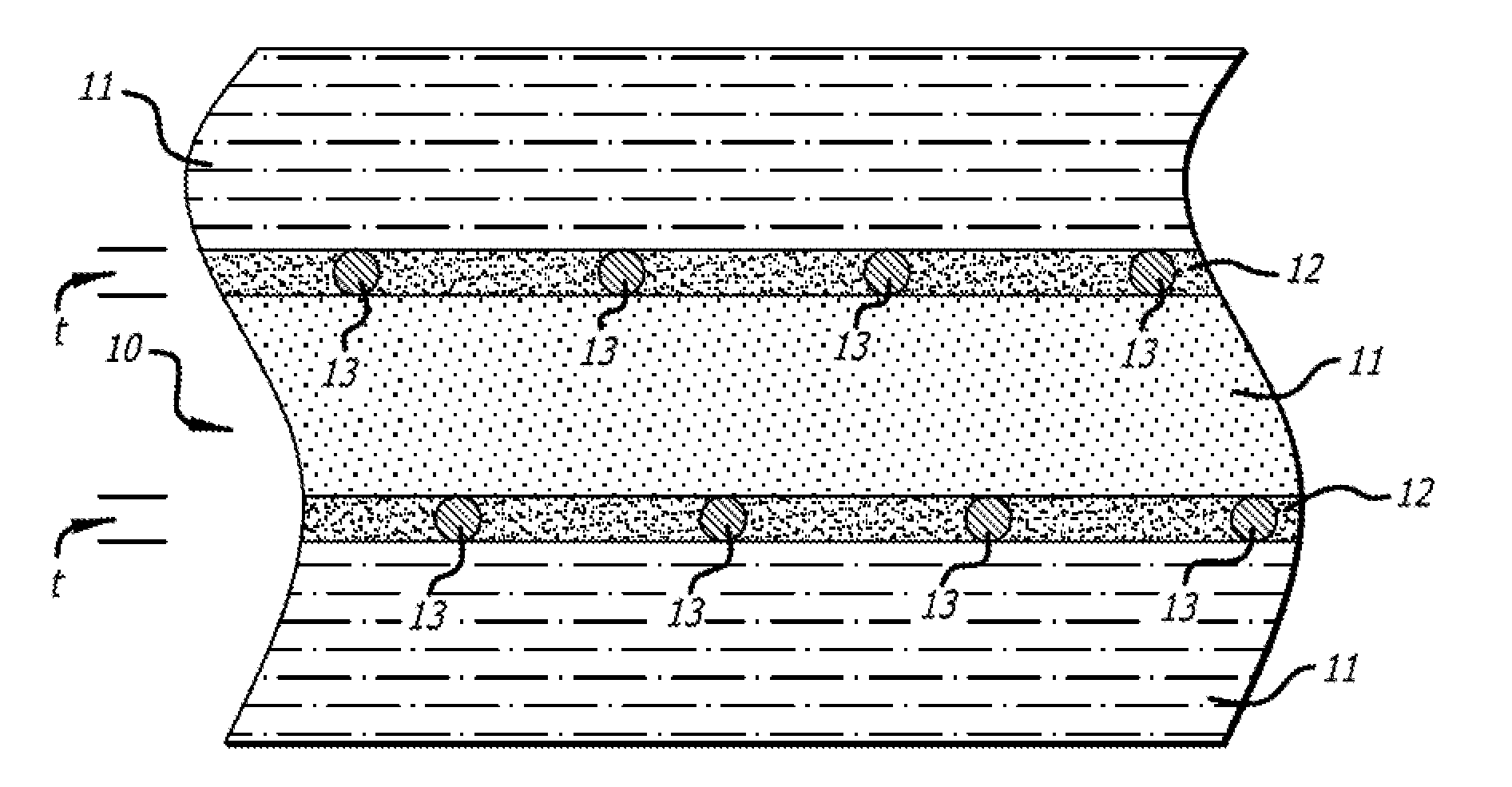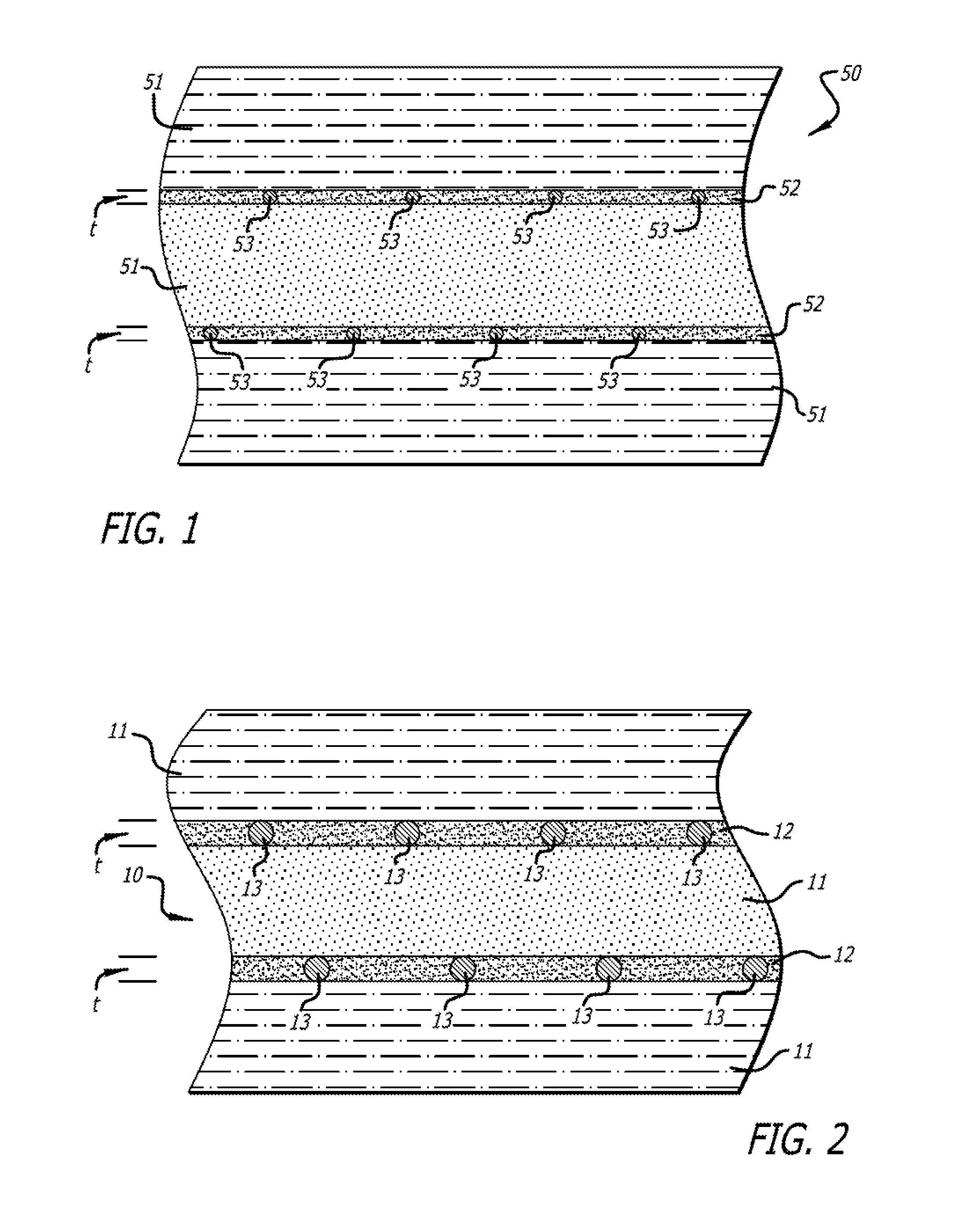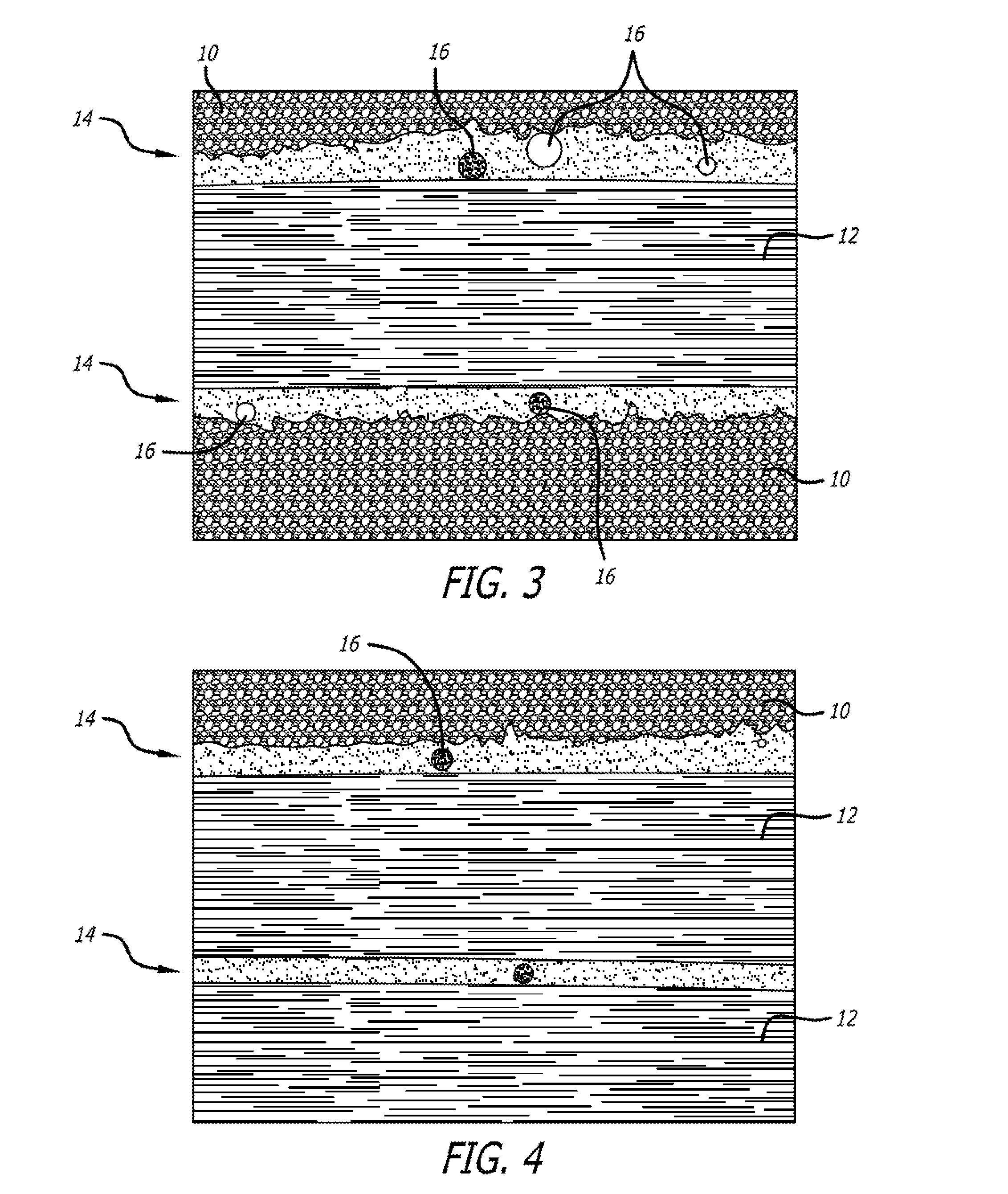Composite materials
a technology of composite materials and composite materials, applied in the field of composite materials, can solve the problems of insufficient and poor electrical conductivity of composite materials based on fibre reinforcements, etc., to achieve the effect of improving electrical conductivity, improving electrical conductivity, and improving electrical conductivity
- Summary
- Abstract
- Description
- Claims
- Application Information
AI Technical Summary
Benefits of technology
Problems solved by technology
Method used
Image
Examples
example 7
Carbon Composite with Conductive Particles
[0165]M21 resin was modified with silver coated solid glass spheres (20 μm) at a range of 0.8-2.4 vol. % of the resin and the components were blended in a Winkworth mixer. The resin was coated as a thin film on silicone release paper and was then impregnated on intermediate modulus IM7 carbon fibre at a resin weight of 35% using a hot press to make a unidirectional prepreg. A five ply prepreg of approximately 10 cm by 10 cm was laid up unidirectionally and cured on a vacuum table at a pressure of 7 bar at 177° C. for 2 hours. A z-direction electrical resistance value was determined according to the method of Example 1. Results are summarised in Table 3.
TABLE 3Volume resistivity of carbon composite modified with silvercoated glass spheres.Silver coatedglass spheresSilver coated glassZ-direction volumeExample(vol. %)spheres (wt. %)resistivity (Ωm)6——3.667-10.822.137-21.641.897-32.461.75
[0166]The results in Table 3 clearly show a decrease in z-...
example 8
Carbon Composite with Conductive Particles
[0167]M21 resin was modified with silver coated hollow glass spheres (20 μm) at a range of 2.5-10.0 vol. % of the resin, and the components were blended in a Winkworth mixer. The resin was coated as a thin film on silicone release paper and was then impregnated on intermediate modulus IM7 carbon fibre at a resin weight of 35% using a hot press to make a unidirectional prepreg. A five ply prepreg of approximately 10 cm by 10 cm was laid up unidirectionally and cured on a vacuum table at a pressure of 7 bar at 177° C. for 2 hours. A z-direction electrical resistance value was determined according to the method of Example 6. Results are summarised in Table 4.
TABLE 4Volume resistivity of carbon composite modified with silvercoated hollow glass spheres according to Example 8.Silver coatedZ-directionSilver coated hollowhollow glassvolumeExampleglass spheres (vol. %)spheres (wt. %)resistivity (Ωm)8-12.52.50.1168-25.05.00.0648-37.57.50.0328-410.010....
example 9
Carbon Composite with Conductive Particles
[0169]M21 resin was modified with silver coated polymethylmethacrylate particles (20 μm) at a range of 2.5-10.0 vol. % of the resin. The resin was produced by blending the components in a Winkworth mixer. The resin was coated as a thin film on silicone release paper and was then impregnated on intermediate modulus IM7 carbon fibre at a resin weight of 35% using a hot press to make a unidirectional prepreg. A five ply prepreg of approximately 10 cm by 10 cm was laid up unidirectionally and cured on a vacuum table at a pressure of 7 bar at 177° C. for 2 hours. A z-direction electrical resistance value was determined according to the method of Example 6. Results are summarised in Table 5.
TABLE 5Volume resistivity of carbon composite modifiedwith silver coated PMMA spheres.Silver coatedSilver coatedPMMA particlesPMMA particlesZ-direction volumeExample(vol. %)(wt. %)resistivity (Ωm)9-12.52.50.5679-25.05.00.1039-37.57.50.1109-410.010.00.052
[0170]T...
PUM
| Property | Measurement | Unit |
|---|---|---|
| weight % | aaaaa | aaaaa |
| thickness | aaaaa | aaaaa |
| sphericity | aaaaa | aaaaa |
Abstract
Description
Claims
Application Information
 Login to View More
Login to View More - R&D
- Intellectual Property
- Life Sciences
- Materials
- Tech Scout
- Unparalleled Data Quality
- Higher Quality Content
- 60% Fewer Hallucinations
Browse by: Latest US Patents, China's latest patents, Technical Efficacy Thesaurus, Application Domain, Technology Topic, Popular Technical Reports.
© 2025 PatSnap. All rights reserved.Legal|Privacy policy|Modern Slavery Act Transparency Statement|Sitemap|About US| Contact US: help@patsnap.com



